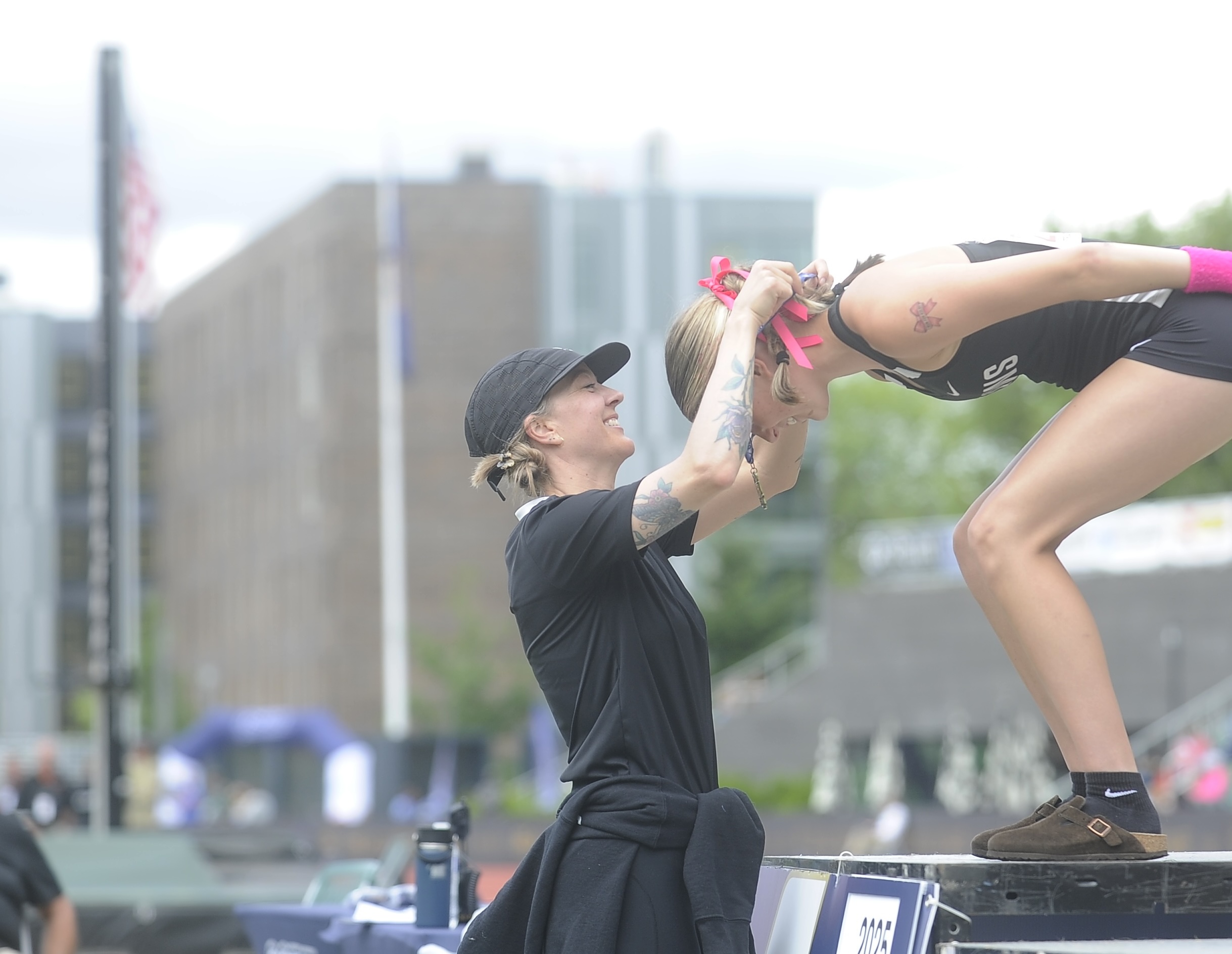A bit of fantasy at Universal’s back lot
Published 12:00 am Saturday, July 4, 2015

- New York Times News ServiceVisitors take the Back Lot tour at Universal Studios, where few movies are actually shot anymore.
UNIVERSAL CITY, Calif. — When Universal Studios opened its back lot to tourists in 1964, it was one of Hollywood’s biggest wows. For the first time, swarms of everyday people, riding in candy-striped GlamorTrams, could come face to face with filmmaking.
Disneyland offered fantasy. Universal served up reality.
But how do you keep interest strong for a back lot tour when very few movies are actually shot on your back lot anymore?
Universal’s trams still attract millions of annual riders. But in recent years — as outdoor film production has moved to Canada, overseas and other less expensive locales — the back lot attractions have aged. Look! The sun-faded remains of the Whoville set used in 2000 for “How the Grinch Stole Christmas.” We are now passing a crashed jetliner, which you may (or may not) remember from the 2005 remake of “The War of the Worlds.”
The solution, Universal has decided, involves tilting the tour toward fantasy.
On June 23 the company opened an elaborate “Fast and Furious”-related tour overlay that makes no attempt to take riders behind the scenes of that car-fueled movie series. Instead, the goal is to put them inside the action. “From deconstructing the movies to reconstructing one” is how Robert Niles, editor of Theme Park Insider, described the shift in focus in a review.
First, the guide spots a “Fast and Furious” stunt car. Then, as the tram chugs past memorable sites — a set used in “Back to the Future,” Wisteria Lane from “Desperate Housewives” — a security guard appears on the tram video monitors: A renegade “Fast and Furious” street racer has skulked onto the lot and the FBI has been called.
A bit later, “Fast and Furious” agent Luke Hobbs (Dwayne Johnson) appears on the monitors with news that there is actually a “high-value witness” hiding on the four-car tram. As the tour then passes a woodsy cabin, the tram abruptly veers into a garage to hide the mystery witness from an international crime syndicate.
It’s no ordinary garage: The tram is essentially inside a 600-foot-long simulator. Among other visual tricks, riders are made to feel as if they are inside a new “Fast and Furious” movie that involves a 120-mph chase through downtown Los Angeles.
“It’s about adding relevancy,” said Larry Kurzweil, president of Universal Studios Hollywood, the theme park that encompasses the tour.
It’s also about playing catch-up after years of underinvestment. In recent decades, Universal’s various owners — General Electric, Vivendi, Seagram — were more interested in wringing cash from the park than putting any in. (“It was a desert,” Kurzweil said.) Comcast finished its acquisition of NBCUniversal in 2013 and has since poured money into Universal Studios Hollywood and Universal Orlando.
Comcast, for instance, is spending $1.6 billion to modernize the Hollywood park and adjacent studio. Last year, a “Despicable Me”-themed area opened here. Now comes the tour overhaul. A Harry Potter-themed expansion is scheduled to open next spring.
The investment has already raised attendance. Last year, Universal Studios Hollywood attracted about 6.8 million visitors, an 11 percent increase from 2013, according to the Themed Entertainment Association.
Universal wants to narrow the attendance gap with nearby Disneyland, which attracted 16.8 million visitors last year, a 3.5 percent increase over the year before. In Florida, Universal Orlando also runs a distant No. 2 to Walt Disney World. (Worldwide, Disney is far and away the biggest theme park operator, followed by Merlin Entertainments, which owns European resorts and the Legoland chain; Universal is third.)
Media giants like Comcast and the Walt Disney Co., which is planning a $1 billion “Star Wars”-centered Disneyland expansion, have become newly enamored with theme parks over the past decade. Despite drawbacks — a sensitivity to the broader economy and crime, endless upkeep — parks have delivered stable growth. Universal’s theme park division generated $1.2 billion in operating income last year, a 16.4 percent increase from a year earlier, according to financial filings. The parks are significantly more profitable for NBCUniversal than Universal Pictures or NBC.
A booming Universal Pictures is helping its corporate sibling. In recent years the movie studio struggled to find smash hits, the kind that can be turned into hit theme park attractions. Universal Studios Hollywood had to license properties from other studios; Paramount’s “Transformers” was one. But it was hard to beef up the back lot tour with anything other than a homegrown hit.
Universal’s “Furious 7,” which took in $1.5 billion this year, “was actually shot right here, which makes it even more perfect,” said Chick Russell, an executive producer for Universal Creative, which designs rides.
That’s a stretch. “Furious 7” was mostly filmed in Colorado and Georgia, where generous tax incentives make production less expensive. Only some green screen work was done here, inside the maze of 30 soundstages that make up Universal’s still-busy “front lot,” which is briefly visited during the 50-minute tour.
Universal has more tour tricks up its sleeve. Starting on a limited basis this summer, the trams will continue operating after sunset.
Nighttime tours have been tried in the past (with the use of spotlights), but were abandoned for lack of interest. Now, with the Harry Potter hordes set to arrive next year, creating extra tour capacity has become a priority. Universal says it has spent two years planning the evening tours, in essence creating a second, after-dark tour centered on “Psycho,” “Frankenstein” and other classic thrillers.
“The ‘Psycho’ house is never going to stop being cool, but a lot of our guests have probably seen it before,” said John Murdy, a Universal executive who oversees the tour. “At night we can make it so much scarier — a whole new experience, really.”






